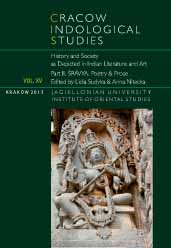Tyrants, Villains, Belles and Saints: Stereotyped Portraits of Muslim Characters in Early Hindi Novels
Tyrants, Villains, Belles and Saints: Stereotyped Portraits of Muslim Characters in Early Hindi Novels
Author(s): Tatiana DubyanskayaSubject(s): Cultural history
Published by: KSIĘGARNIA AKADEMICKA Sp. z o.o.
Keywords: Colonial India; Hindi literature; Hindi novel; historical fiction; Indian nationalism; Hindu nationalism; Hindu-Muslim relationship; Bhāratendu Hariścandra; Devakīnandan Khatrī; Kiśorīlāl Gosvāmī.
Summary/Abstract: This paper seeks to look at the prose fiction and essays published in Hindi in North India in the second half of the 19th century and the early 20th century from the viewpoint of contemporary religious controversies and communal developments. It suggests a closer look at a few representative Hindi texts by leading Hindi authors (Bharatendu Harishchandra, Devakinandan Khatri, Kishorilal Gosvami). These littérateurs made quite special efforts to point out the religious backgrounds of the fictional characters in their works and, thus, to create a general awareness about the roles of Hindus and Muslims, both in contemporary Indian society and in the historical perspective. Being rather assertive Hindus themselves, they not only pointed out certain negative sides of “the other” community but, also—as in the case of Gosvami— severely criticized the erstwhile Islamic rulers of India. Why was the task of portraying Muslims so crucial for Hindi literature, especially at the time of serious socio-political and religious turbulences? How does this interest go along with the identity-forming agenda of the epoch? What are the ways to structure and generalize the relevant attitudes of the authors and to explain them from the point of view of the historical development of the post-Mutiny society in North India? These are some of the questions to be approached in this paper.
Journal: Cracow Indological Studies
- Issue Year: 2013
- Issue No: 15
- Page Range: 265-286
- Page Count: 22
- Language: English

